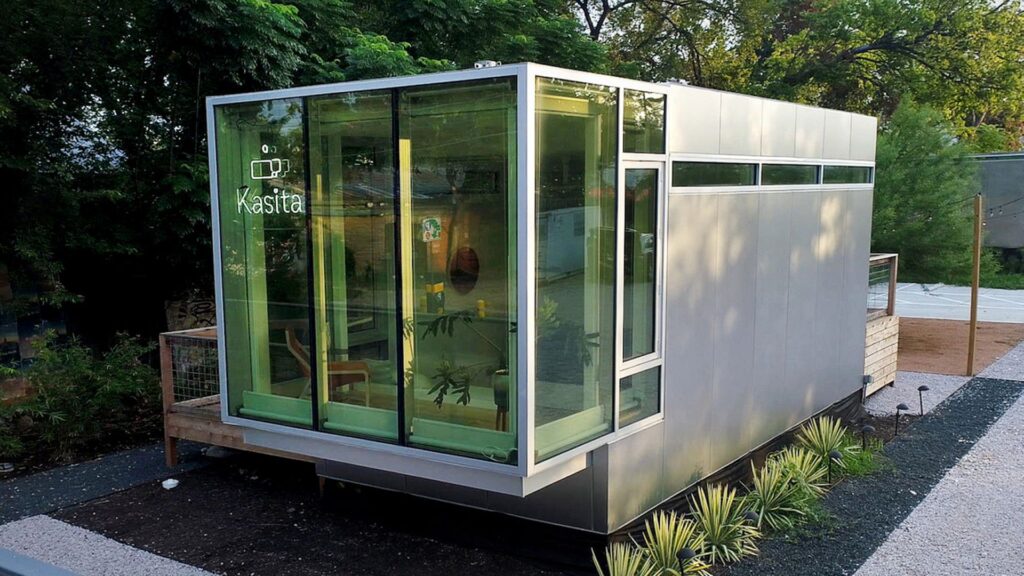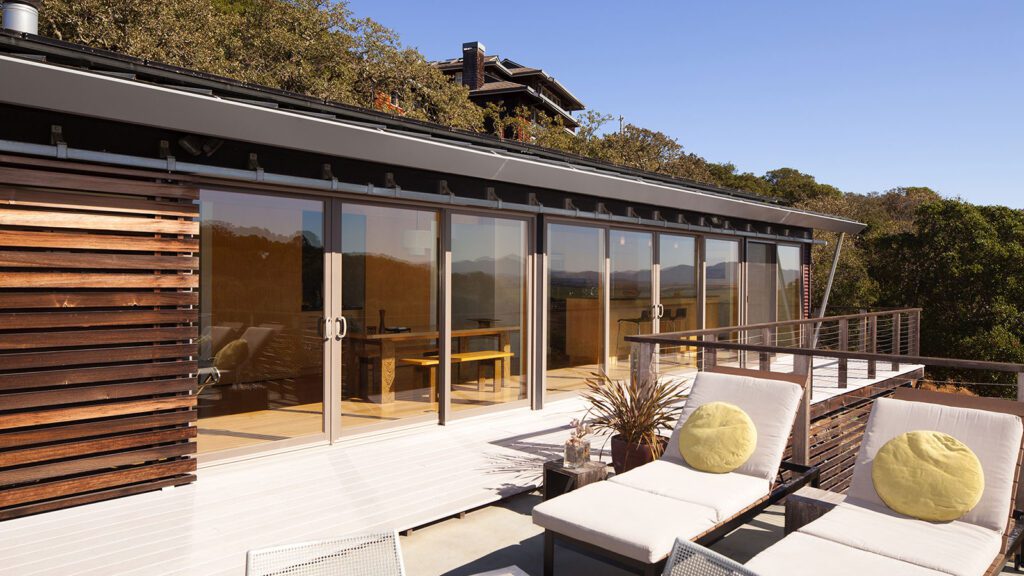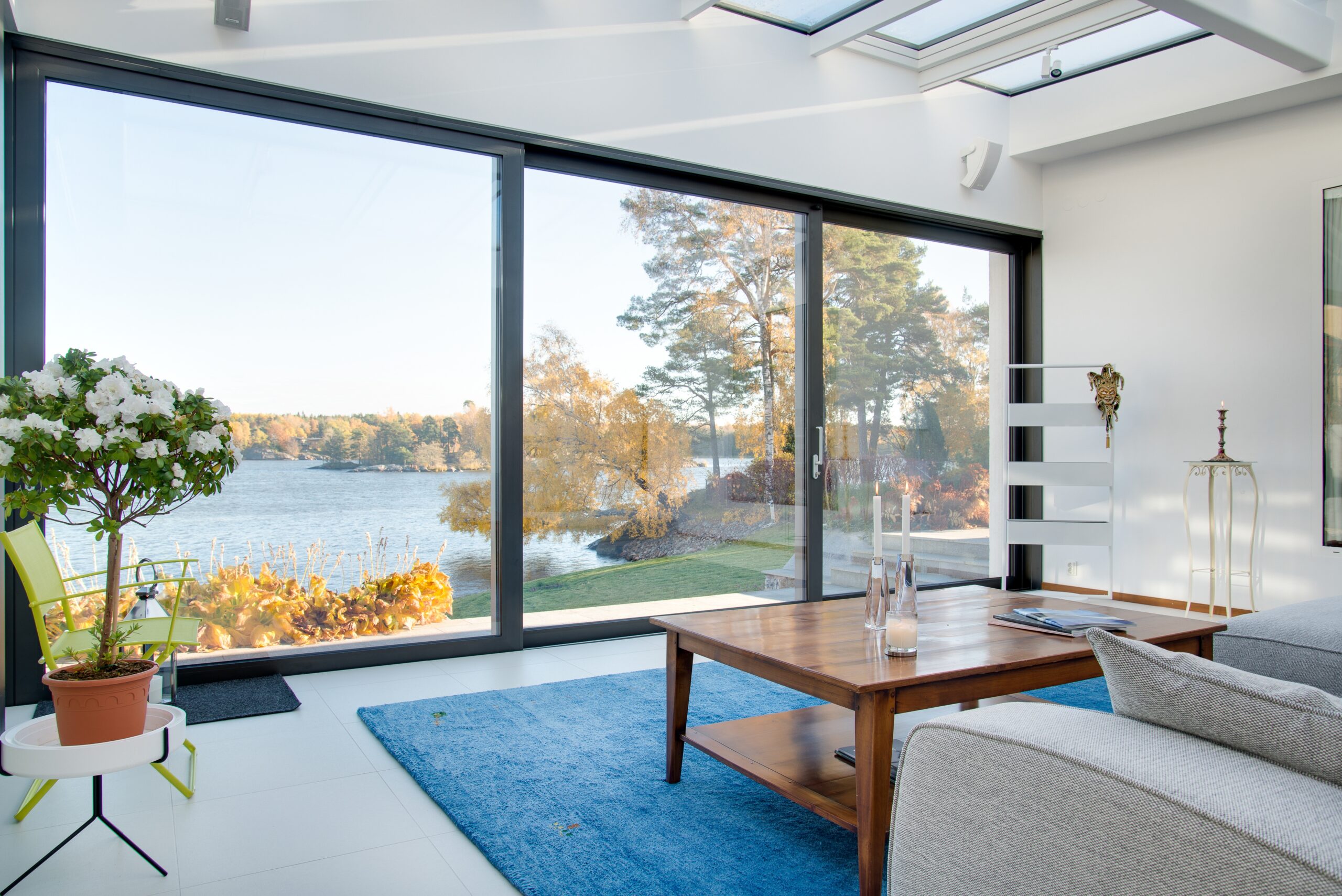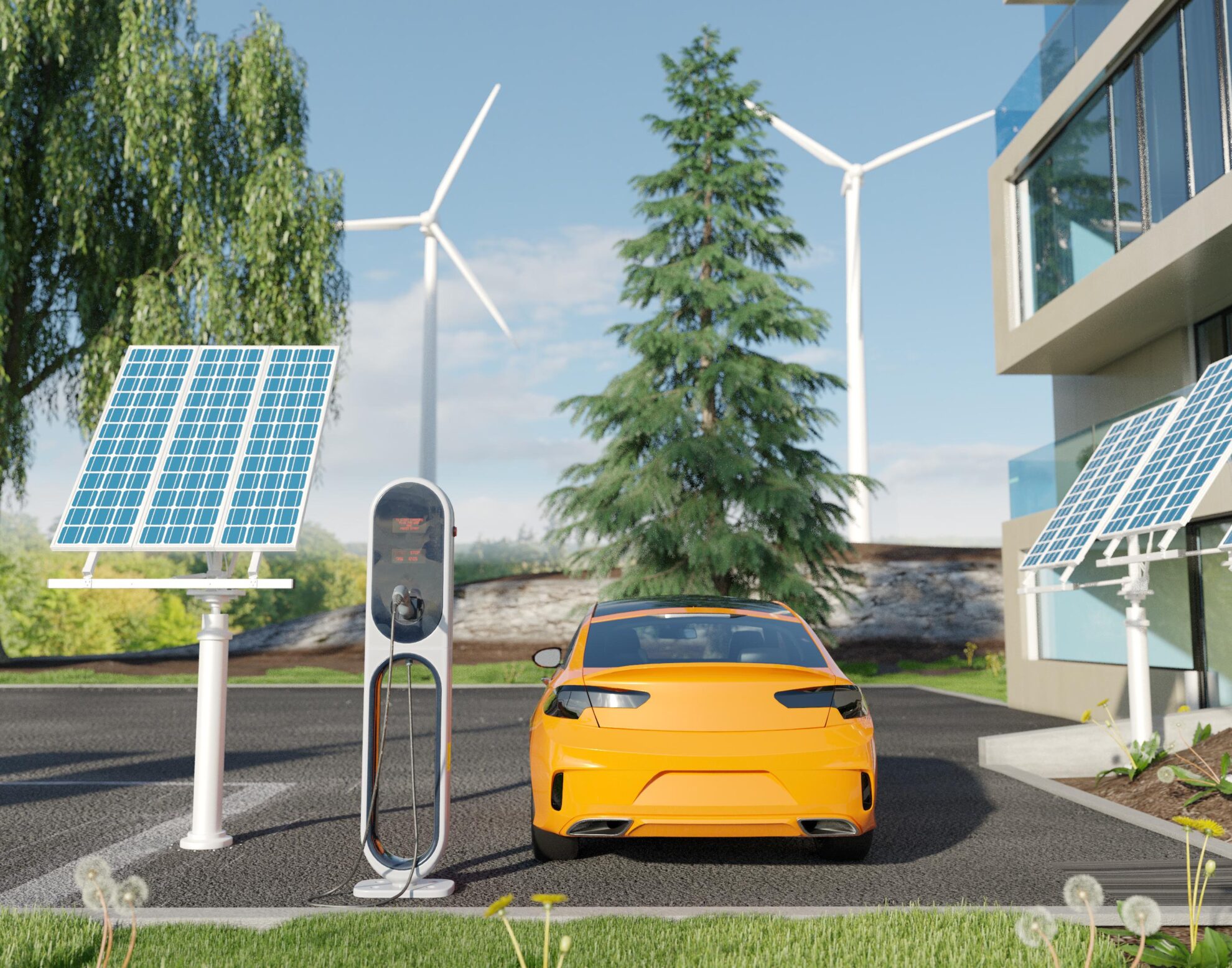Table of Contents
As the world becomes increasingly aware of the need for sustainable practices in all aspects of life, housing is no exception. Homes account for a significant amount of energy consumption, waste production, and carbon emissions, making sustainable housing an essential part of the solution to the environmental challenges we face.
Modular homes have emerged as a leader in sustainable housing, offering benefits such as energy efficiency, waste reduction, and reduced carbon footprint. This article will explore modular homes’ environmental, economic, and design benefits and provide examples of successful sustainable modular home projects.
The Environmental Benefits of Modular Homes
A. Energy efficiency
Modular homes are designed to be energy-efficient, reducing the amount of energy needed to heat, cool, and power them. This is achieved through several features, such as increased insulation and airtightness, reduced air leakage, and heat transfer. Modular homes are also designed to make the most of natural light and ventilation, reducing the need for artificial lighting and HVAC systems. Additionally, modular homes can incorporate renewable energy sources, such as solar panels or wind turbines, to further reduce dependence on non-renewable energy.
B. Waste reduction
Traditional home construction generates significant waste, with up to 30% of materials ending up in landfills. Modular homes, on the other hand, produce significantly less waste due to their construction process. The components of modular homes are manufactured off-site, using precision cutting and assembly techniques that generate less waste than traditional construction methods. In addition, modular homes are designed for disassembly and reuse, meaning they can be easily deconstructed and their components reused, reducing the amount of waste generated.
C. Reduced carbon footprint
Modular homes have a smaller carbon footprint than traditional homes due to several factors. First, their construction process produces less waste and uses fewer resources, reducing their overall environmental impact. Additionally, modular homes can be built using sustainable building practices and materials, such as recycled or sustainably sourced materials. Finally, the transportation emissions associated with modular homes are lower than traditional homes, as the components are manufactured off-site and transported to the construction site.
Innovative Design and Sustainable Materials
A. Flexibility and adaptability
Modular homes offer greater flexibility and adaptability than traditional homes. Because they are constructed in modules, they can be easily expanded or reduced, making them ideal for growing families or those with changing needs. Additionally, the modules can be easily moved, allowing homeowners to relocate without leaving their homes behind.
B. Reduced need for natural resources
Modular homes require fewer natural resources than traditional homes, making them a more sustainable option. Many modular homes use recycled or sustainable materials, such as reclaimed wood, bamboo, or recycled steel. This reduces the environmental impact of the construction process and minimizes waste. Additionally, the precision cutting and assembly techniques used in modular home construction minimize the amount of material needed, further reducing the impact on natural resources.
C. Health and wellness benefits
Modular homes offer several health and wellness benefits that traditional homes may not provide. For example, modular homes are designed to maximize natural light and ventilation, creating a healthier indoor environment. Additionally, many modular homes are built with low or zero VOC (volatile organic compound) materials, reducing the risk of indoor air pollution. Finally, modular homes can incorporate green spaces, such as gardens or living walls, providing access to nature and improving mental and physical well-being.
The Economic Advantages of Modular Homes
Modular homes offer several economic advantages over traditional site-built homes. Here are some of the most notable:
A. Lower Construction Costs
One of the biggest advantages of modular homes is that they are much more affordable to build than traditional homes. The cost savings come from several factors. First, the construction process is much faster, which means lower labor costs. Second, the materials used to build modular homes are often less expensive than those used in traditional homes. Finally, because modular homes are built in a factory, there is less waste generated during the construction process, which can also help reduce costs.
B. Reduced Maintenance and Repair Costs
Modular homes are also cheaper to maintain and repair than traditional homes. This is partly due to the fact that modular homes are built to be energy efficient, which can help reduce utility bills. Additionally, because modular homes are built in a factory, the building materials are subjected to rigorous quality control standards, which can help ensure that the home is structurally sound and less likely to require repairs.
C. Increased Resale Value
Modular homes also have a higher resale value than traditional homes. This is partly because modular homes are built to last, with durable materials and high-quality construction. Additionally, because modular homes are highly customizable, homeowners can often create a home that is perfectly suited to their needs and tastes, which can increase their appeal to potential buyers.
Overall, the economic advantages of modular homes make them an attractive option for homeowners who are looking to save money on construction, maintenance, and repairs. By reducing costs and increasing resale value, modular homes offer a smart investment for anyone who is interested in sustainable living.
Case Studies: Examples of Sustainable Modular Homes
To better understand the potential of sustainable modular homes, it is helpful to examine some real-world examples. Here are a few notable projects that showcase the design and sustainability features of modular homes:
Each of these projects features unique design and sustainability features that make them a standout in the modular home industry. Kasita homes, for example, are designed to be stackable, which allows for more efficient use of urban space. The homes are also equipped with energy-efficient appliances and a smart home system, which allows residents to control their energy use and reduce their carbon footprint.

Kasita – Austin, Texas Kasita is a micro home designed for urban living that is built from modular components. The homes are designed to be stackable and can be combined to create larger living spaces. The Kasita homes are equipped with energy-efficient appliances, a smart home system, and a rainwater harvesting system. Kasita homes are made with durable materials that are designed to last for years to come.

Glidehouse – Windsor, California The Glidehouse is a modular home designed by architect Michelle Kaufmann. The home is built from prefab components that are assembled on-site. The Glidehouse is designed to be energy efficient, with features such as solar panels, low-flow fixtures, and energy-efficient appliances. The home is also constructed from sustainable materials, including bamboo flooring and non-toxic finishes.

LivingHomes – Los Angeles, California LivingHomes is a series of modular homes designed by architect Ray Kappe. The houses are built from sustainable materials, including FSC-certified wood and recycled steel. They are also equipped with energy-efficient features, such as solar panels and low-flow fixtures. LivingHomes are designed to be net-zero energy, meaning that they produce as much energy as they consume.
The Glidehouse, on the other hand, is designed to be energy efficient, with features such as solar panels and low-flow fixtures. The home is also built from sustainable materials, including bamboo flooring and non-toxic finishes, which help reduce the environmental impact of the construction process.
LivingHomes are designed to be net-zero energy, which means that they produce as much energy as they consume. They are equipped with features such as solar panels, low-flow fixtures, and energy-efficient appliances, which help reduce the home’s energy use. LivingHomes are also built from sustainable materials, such as FSC-certified wood and recycled steel.
Challenges and Limitations
As with any new technology, there are several challenges and limitations that come with contemporary modular homes. In this section, we will take a closer look at some of the key issues that may impact the widespread adoption of these homes.
A. Zoning and Regulatory Challenges
One of the biggest challenges facing modular homes is zoning and regulatory issues. Some municipalities have zoning laws that prohibit the use of modular homes, or make it difficult for homeowners to obtain the necessary permits. Additionally, building codes may differ from one region to another, making it difficult for modular home builders to create standardized designs that can be used in different locations.
B. Perception and Misconceptions
Another challenge facing contemporary modular homes is perception and misconceptions. Many people still associate modular homes with the old-fashioned mobile homes of the past. However, the truth is that modular homes today are highly customizable and can be designed to look like traditional homes. Educating the public about the benefits and features of modular homes will be key to overcoming this challenge.
C. Limitations of Modular Homes in Terms of Customization
While modular homes can be highly customizable, there are still some limitations to what can be achieved with this technology. For example, some homeowners may want to have unique features such as curved walls or unconventional room shapes, which may be difficult to achieve with modular construction. Additionally, there may be limitations in terms of the types of materials that can be used in modular homes, which may impact the design options available to homeowners.
Despite these challenges and limitations, modular homes are gaining popularity as an affordable and sustainable housing option. With advances in technology and a growing demand for sustainable living, it is likely that we will see continued growth in the modular home industry in the coming years.
In conclusion, sustainable modular homes offer a range of benefits that make them a highly attractive option for those seeking to reduce their carbon footprint, increase energy efficiency, and save on costs. From their innovative design and construction methods to their use of eco-friendly materials and renewable energy sources, modular homes are leading the way in sustainable housing solutions.
Furthermore, as seen in the case studies presented, sustainable modular homes have already been successfully implemented across the world, with impressive results in terms of environmental impact, economic savings, and increased home value. While there are still some challenges and limitations to overcome, such as zoning and regulatory hurdles, public perception, and customization options, the potential for sustainable modular homes is tremendous.
As we look toward the future, it is clear that sustainable modular homes have a significant role to play in addressing the urgent environmental challenges we face today. It is imperative that we embrace and promote the adoption of these innovative and eco-friendly housing solutions to ensure a more sustainable future for generations to come. Let us take action now and work together towards a more sustainable and environmentally conscious future.
Frequently Asked Questions
Modular homes are built to last just as long as traditionally constructed homes, typically around 50-100 years with proper maintenance and upkeep.
Modular homes can be constructed with a variety of materials, but many manufacturers focus on using sustainable and eco-friendly materials such as recycled steel, bamboo, and low VOC (volatile organic compound) paints and adhesives.
Modular homes can be engineered and constructed to be just as resilient as traditional homes in the face of natural disasters such as earthquakes, hurricanes, and floods.
Yes, modular homes can be designed and constructed completely off-grid, utilizing renewable energy sources such as solar panels and wind turbines.
Warranties can vary depending on the manufacturer and the specific modular home, but most modular homes come with a structural warranty that covers any defects or issues related to the home’s construction.







